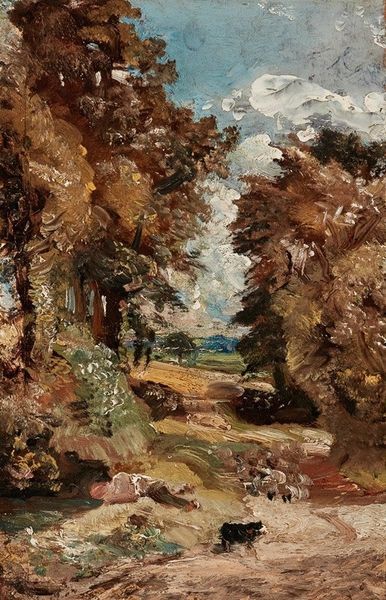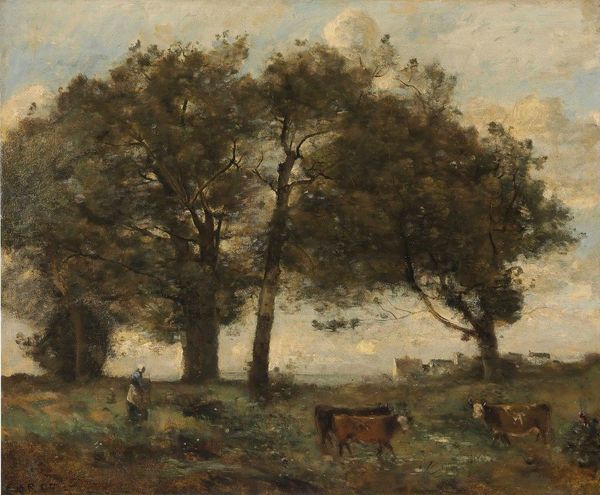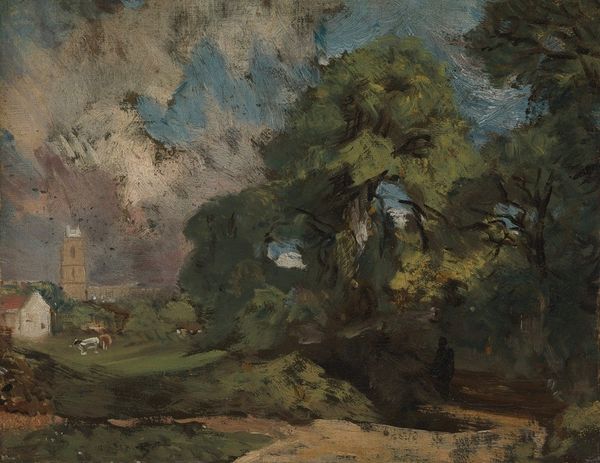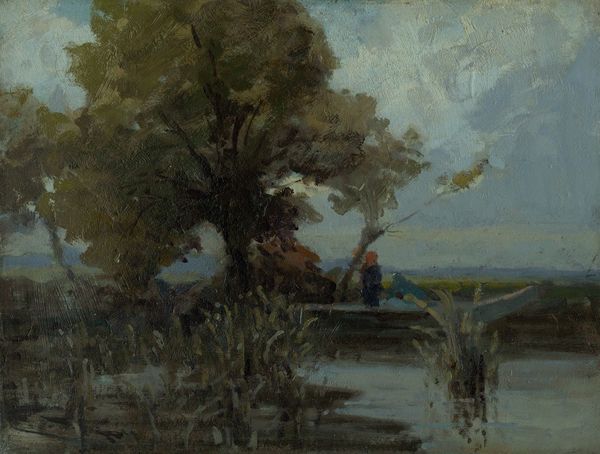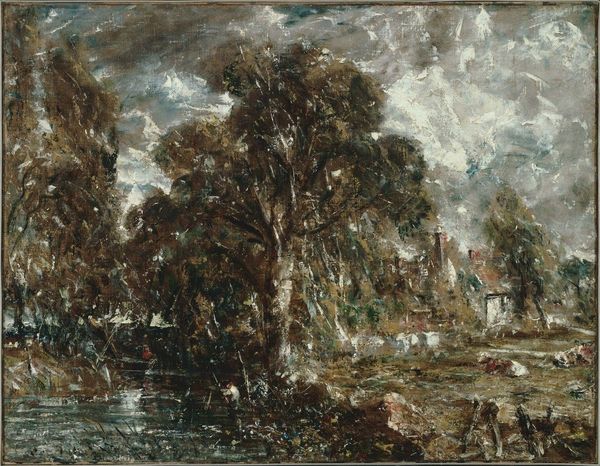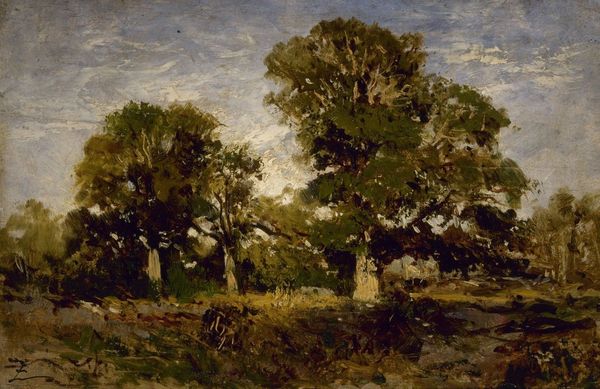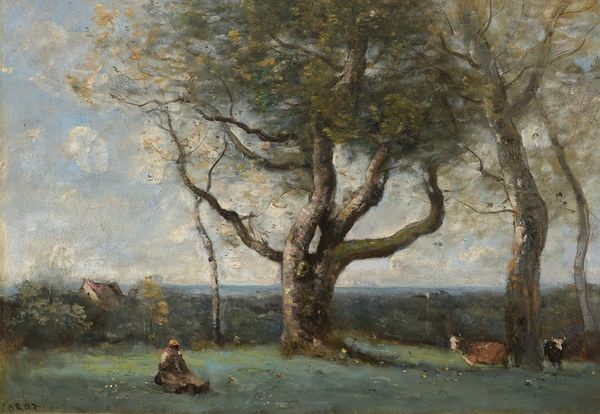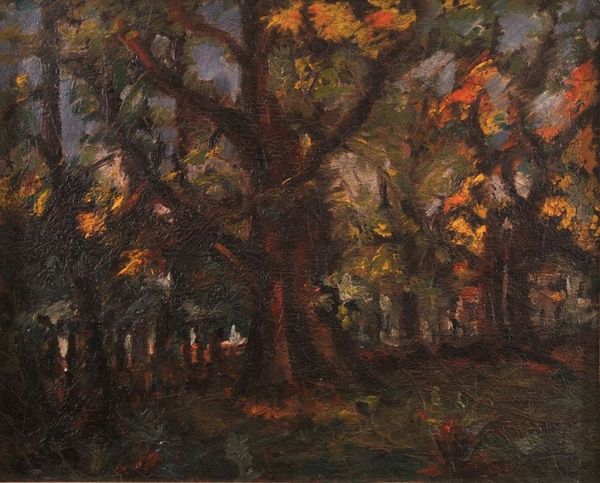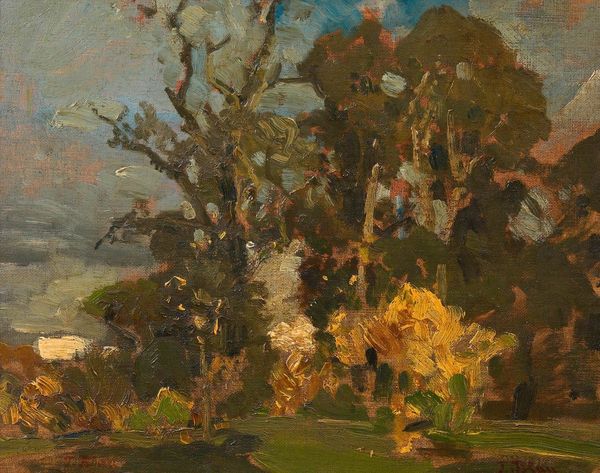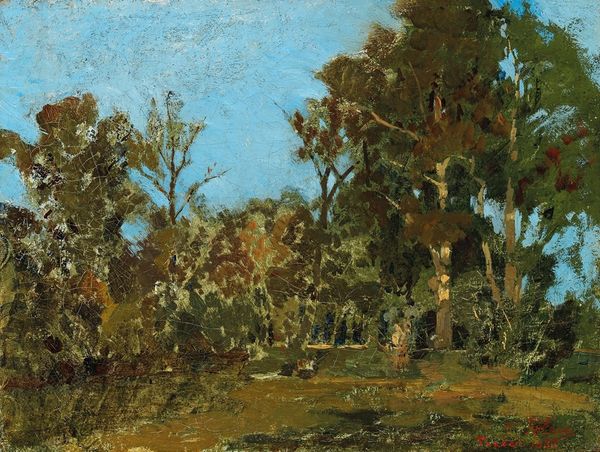
plein-air, oil-paint
#
portrait
#
plein-air
#
oil-paint
#
landscape
#
impressionist landscape
#
oil painting
#
romanticism
#
cityscape
Copyright: Public Domain: Artvee
Editor: Here we have John Constable’s "Fen Lane, East Bergholt," created around 1811 using oil paint. There’s almost a hushed quality to this small painting; the deep browns and greens create a sense of intimacy. What do you see in this work? Curator: It’s fascinating how Constable imbues a seemingly simple lane with so much symbolic weight. Notice the overarching trees – almost cathedral-like in their structure. Do you feel they create a sense of enclosure? Editor: Yes, almost protective. The lane seems to lead somewhere secret. Curator: Exactly. Lanes, throughout art history, often represent pathways, transitions. Think about folk tales—where do significant encounters usually happen? At crossroads or on wooded paths. The lane becomes a metaphor for life's journey, full of unseen possibilities. Editor: That’s really interesting. So, is the person walking the path symbolic as well? Curator: Absolutely. Figures in landscapes often stand in for humanity’s relationship with nature, or in this case, our passage through time. Constable captures a moment of rural existence and elevates it into something universally human, touching our collective memory. This isn’t just a place, it’s a state of mind. Editor: It makes me appreciate how much meaning can be packed into an ordinary scene. It’s more than just trees and a path, it's laden with implied narratives. Curator: Indeed. The enduring power of art lies in its ability to tap into our shared human experience through the simplest of forms and symbols. It encourages us to look deeper, doesn’t it? Editor: Definitely, I'll never look at a lane the same way again.
Comments
No comments
Be the first to comment and join the conversation on the ultimate creative platform.
